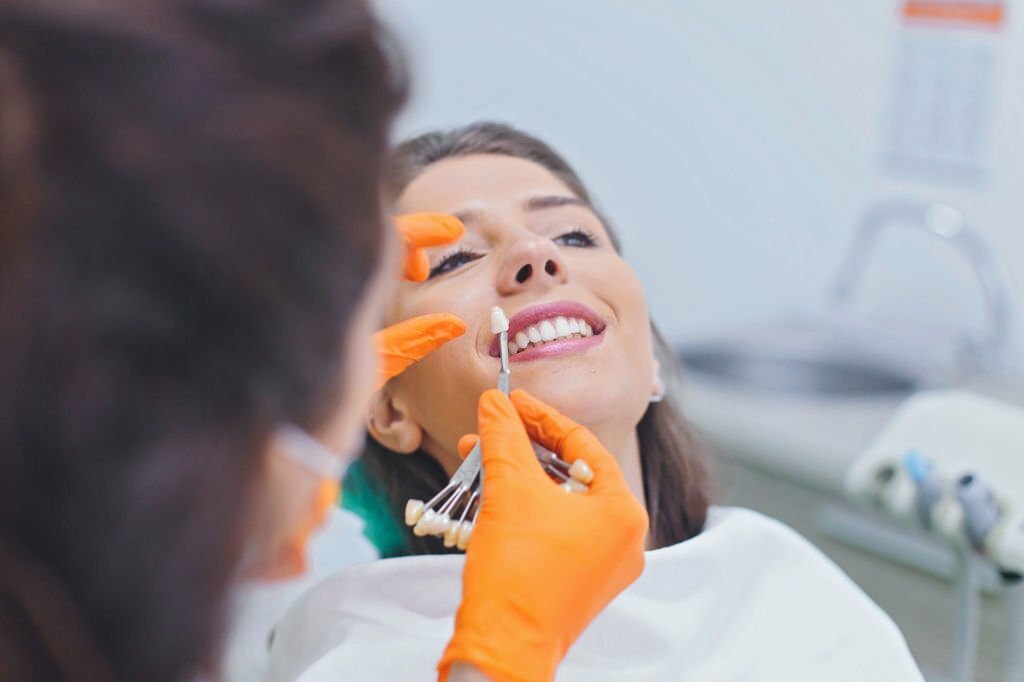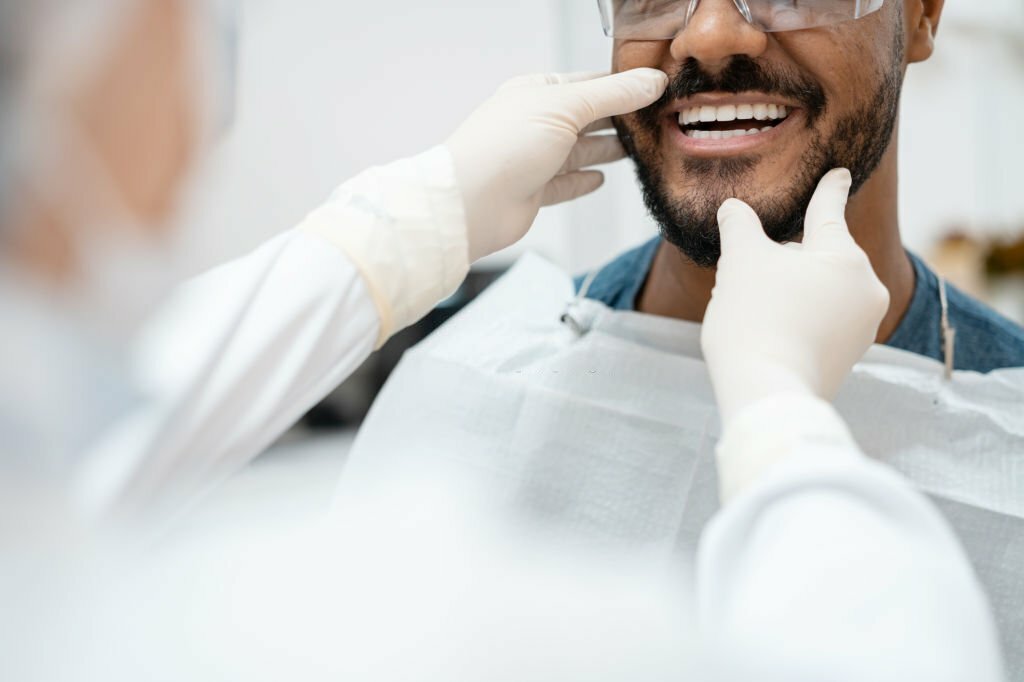Did you know?
Cosmetic dentistry can help elate teeth sensitivity when no other options help.
Cosmetic dentistry, especially professional whitening teeth, is the most in-demand oral treatment procedure. Sadly, however, a majority of individuals continue to stay confused about the procedure.
In this blog, we take a closer look at:
- Cosmetic Dentistry: What Makes It Different?
- Common Cosmetic Dentistry Treatment
- Different Stages Involved In Professional Teeth Whitening
- How Long Do Cosmetic Procedures Last?
Let’s learn more about professional teeth whitening in the following sections.
Introduction:
Do you often shy away from smiling?
If yes, chances are that you have a chipped, broken, or imperfect tooth. However, gone are the days when the perfect smile was a dream for many! Thanks to the applications of cosmetic dentists in Prairie Village, Kansas, a perfect smile is only a treatment away.
Thanks to the applications of cosmetic dentists in Prairie Village, Kansas, a perfect smile is only a treatment away.
Wonder how? Let’s learn more about cosmetic dentistry in the following sections.
Cosmetic Dentistry: What Makes It Different?
Cosmetic dentistry is the branch of dentistry that focuses on improving the aesthetic appeal of patients. This branch of dentistry focuses on innovative ways, like teeth whitening, veneers, and dental bonding, to improve your smile.
Visiting a cosmetic dentist in Kansas City can be a great option for you if you have:
- Chipped or fractured teeth.
- Small spaces or gaps between your teeth.
- Discoloration and staining of the teeth.
- Crooked teeth.
- Misaligned teeth.
Difference Between Cosmetic Dentistry And General Dentistry?
A general dentist is a significant provider of dental treatment. They provide preventative care, such as tooth cleanings, as well as restorative dentistry services, such as dental crowns, bridges, and fillings.
The majority of dental procedures restore beauty, health, and function. A cosmetic dentist, on the other hand, concentrates on improving the appearance of your smile. They provide procedures to improve the look of your teeth and gums.
Common Cosmetic Dentistry Treatment
Teeth whitening is by far the most popular teeth whitening alternative. This process allows you to clean your teeth using DIY over-the-counter whitening solutions at home or by visiting a cosmetic dentist for professional office whitening.
Veneers are thin, porcelain shells that improve the color, looks, and size of your teeth. These tiny shells are bonded with your front teeth as an oral aesthetic. These appliances are designed for each patient and can last up to ten years.
Dental implants mimic the functioning of a natural tooth. They anchor to the jawbone, imitating the root of your tooth, and crowns cover them to provide a natural look and feel.

This technique involves the removal of tiny portions of enamel to alter the contour of your teeth. Your dentist can only remove so much tooth structure since the amount of natural enamel is limited. Your dentist can complete tooth contouring in a single office visit.
Some people are born with an abundance of gum tissue. When this happens, your grin may seem “gummy” or uneven. Your dentist will remove extra gum tissue and restructure your gum line for a more symmetrical, balanced look during gum contouring.
So, now that we have an idea of some of the most common dentistry options let’s focus on the most in-demand one.
Different Stages Involved In Professional Teeth Whitening
Stage I: Checking The Shade
Before they proceed with the teeth whitening steps, your dentist will first take note of the color of your teeth. This is to determine the extent to which your teeth must be whitened. It will also assist the dentist in determining how concentrated the whitening solution must be to achieve that shade.
Stage II: Cleaning And Polishing
In the second stage, the dentist will clean and polish your teeth using pumice. Your dentist may even place a gauze pad in your mouth to absorb the whitening chemical in the best possible way.
Cleaning your teeth also helps eliminate any existing plaque from your teeth before whitening using bleaching gel. Once done, the dentist uses retractors to prevent your tongue, lips, and gums from getting affected by the whitening substance.
Stage III: Coating With The Whitening Agent
Your dentist will use a hydrogen peroxide solution to bleach your teeth. They will cover the front of your teeth to give a complete whitening makeover to your smile. However, they’ll leave the back of your teeth because teeth whitening is only to improve the appearance of your smile, and the rear of your teeth does not show, no matter how wide you grin!
To whiten your teeth, the 15 percent hydrogen peroxide solution momentarily opens up the pores in your teeth, entering them and removing stains from within. The coating would be applied to your teeth for roughly 30 minutes before the dentist decided to go on to the next procedure.
Stage IV: Rinsing
At this stage, the dentist will completely wash your mouth after coating it with a whitening agent. We do this to remove any residual from the solution. Don’t be surprised if your bleaching doctor brushes your teeth as well. This is most likely because the following phase involves fluoride treatment!
Stage V: The Fluoride Treatment
At this stage of the treatment, a fluoride varnish will be applied to your teeth. Fluoride is provided to keep your teeth shining and the whiteness you’ve just obtained.
Furthermore, fluoride aids in removing any existing plaque in your mouth since it acts as a catalyst in the staining of your teeth! That concludes the whitening deep teeth whitening procedure.
How Long Do Cosmetic Procedures Last?
Different dental cosmetic treatments have varying life spans. For example, teeth whitening can fade in as little as six months or last for up to three years. It all depends on how cautious you are following a dental operation.
People who smoke and use drugs or who do not follow dental care habits, such as cleaning their teeth before bed, may see their dental attractiveness eroding swiftly. Similarly, operations such as crowning require caution. It is also possible that your oral cavity didn’t accept the implant, which may loosen and result in a dental emergency shortly afterward.
To summarize, cosmetic dentistry is about how cautiously you follow the surgery. The better you follow the instructions, the higher your chances of lasting results.
Takeaway
- Cosmetic dentistry is the branch of dentistry that focuses on improving the aesthetic appeal of patients.
- A cosmetic dentist concentrates on improving the appearance of your smile.
- Teeth whitening is the most in-demand cosmetic procedure.
- Make the most of your smile with our experts at Cope dentistry.

